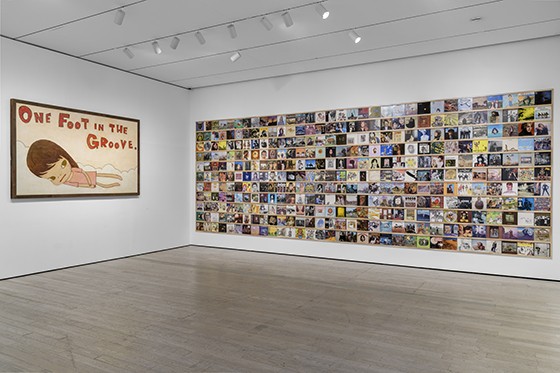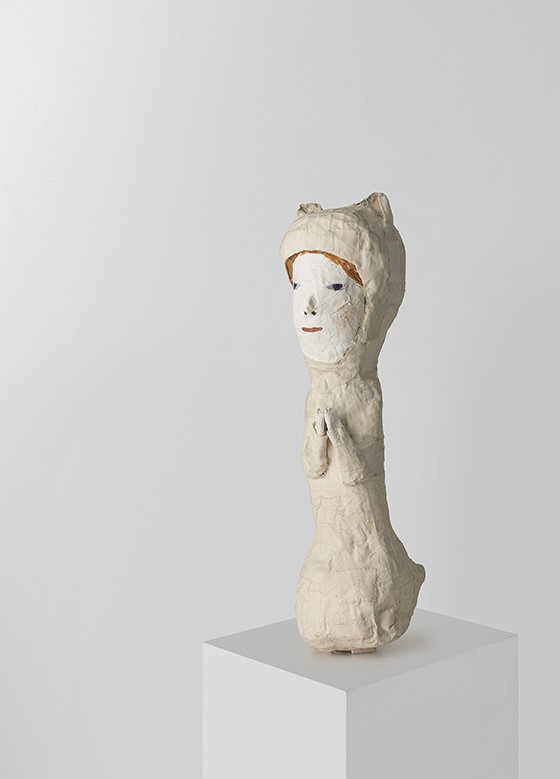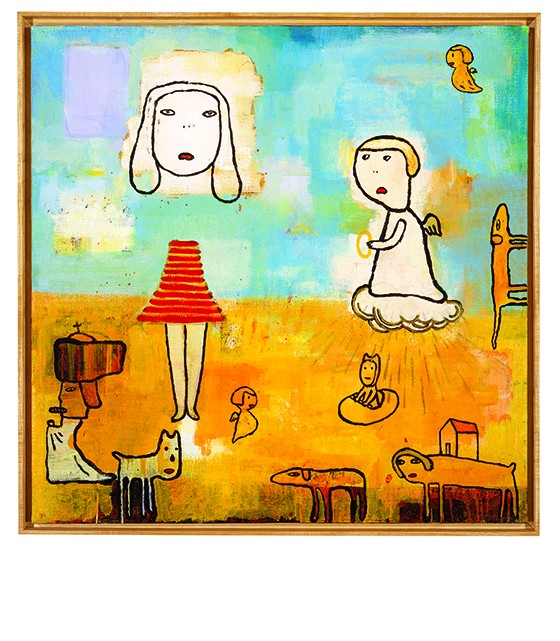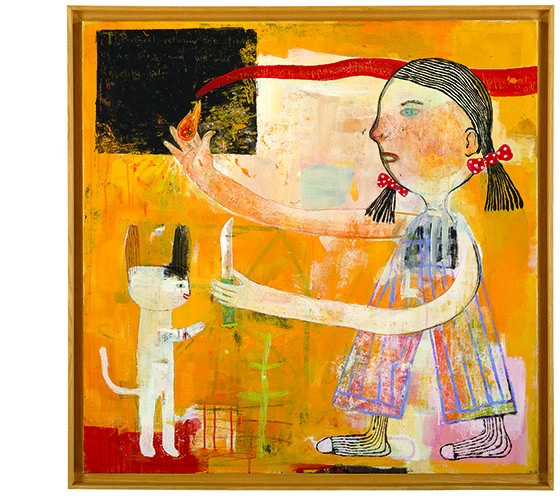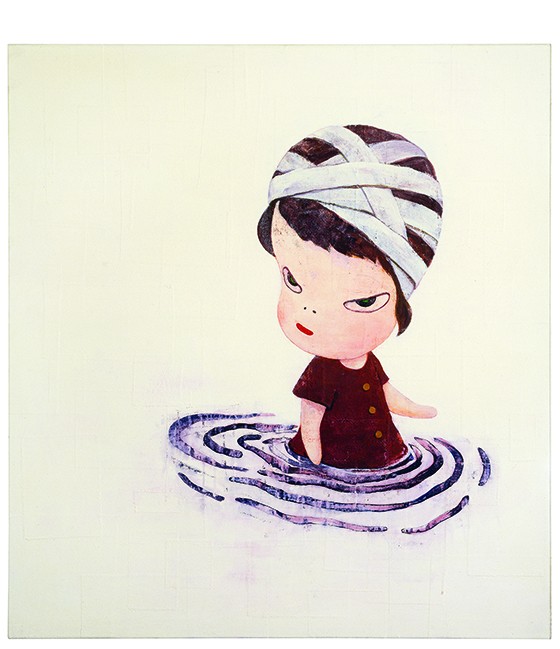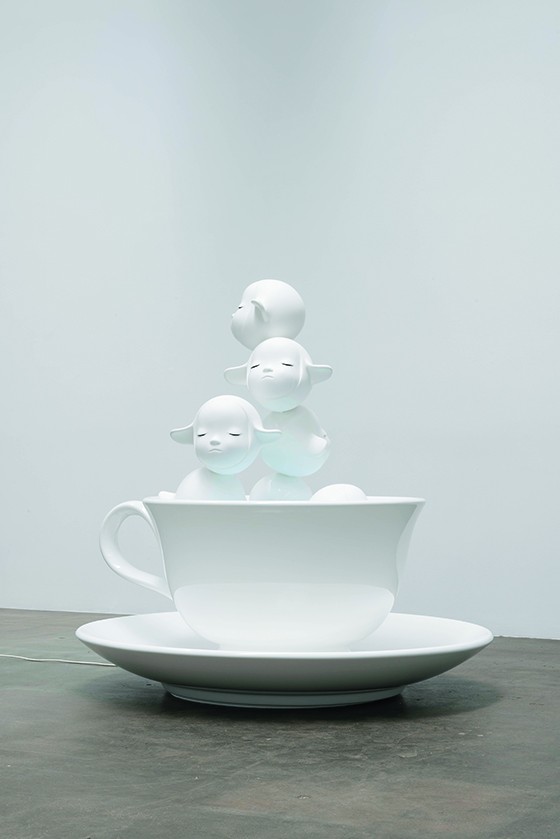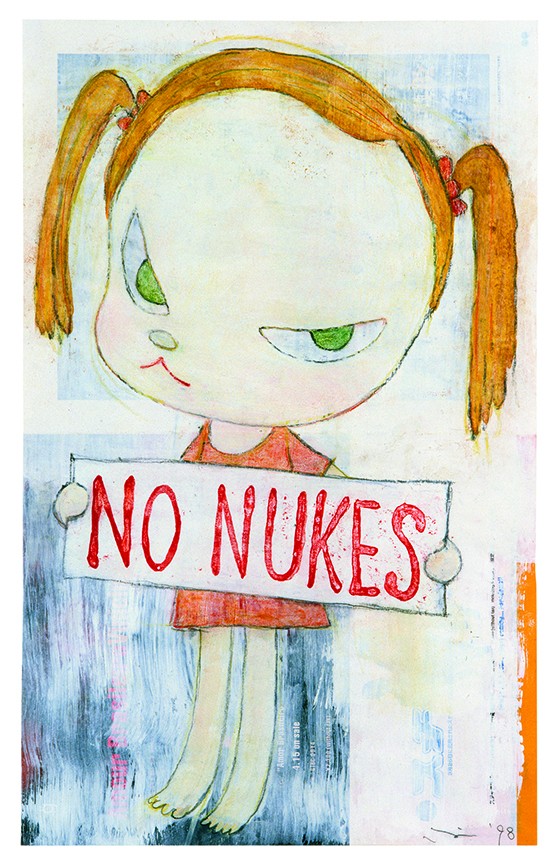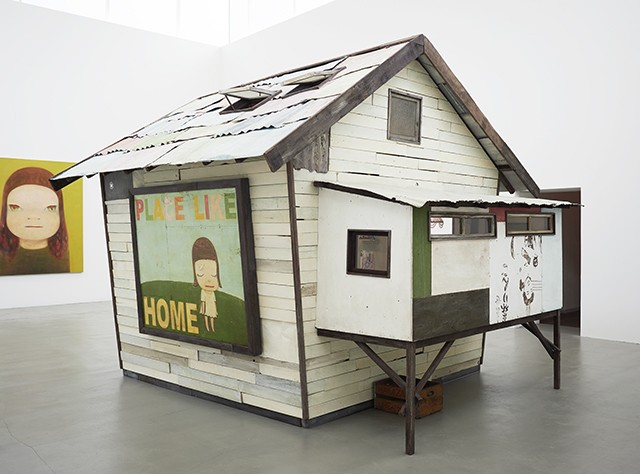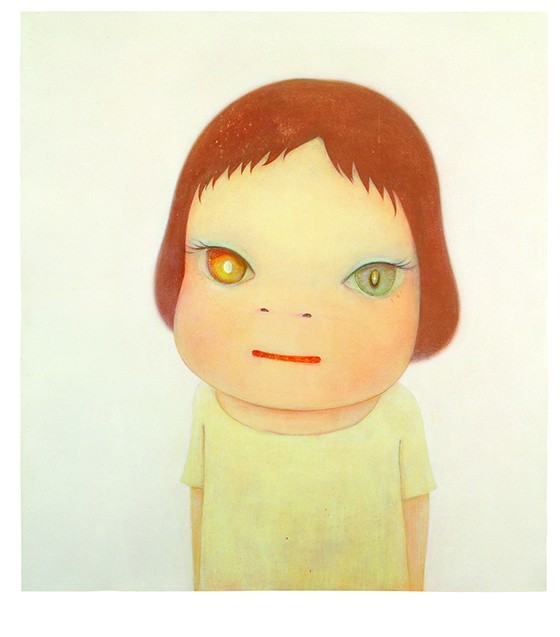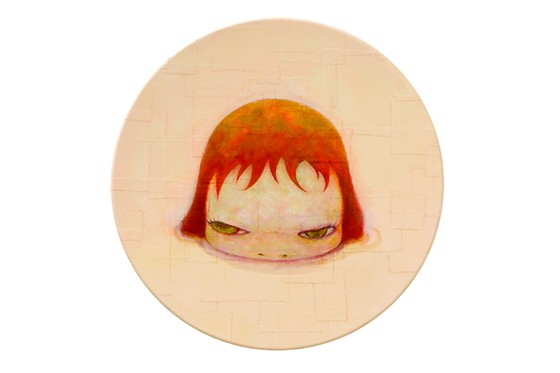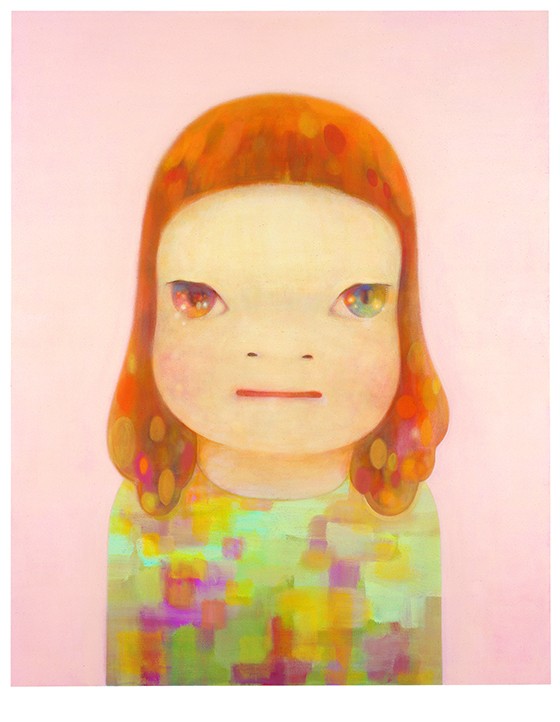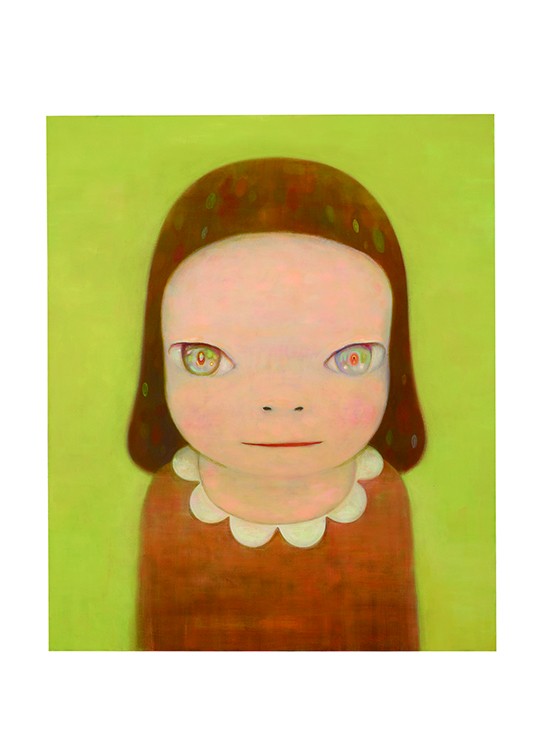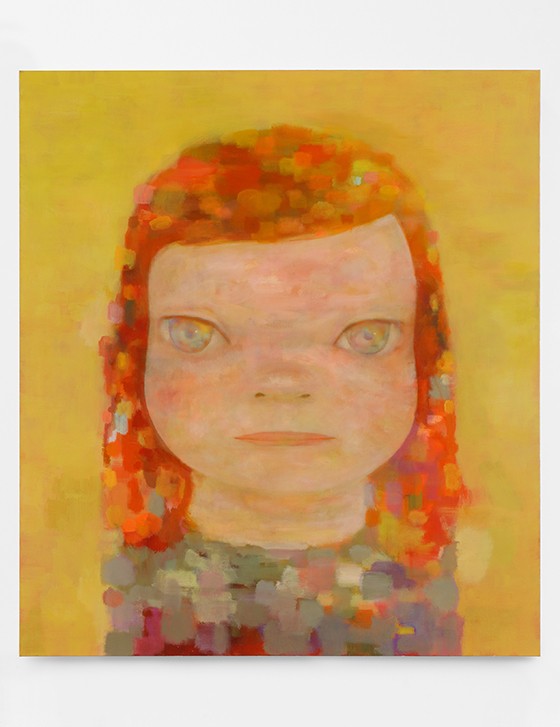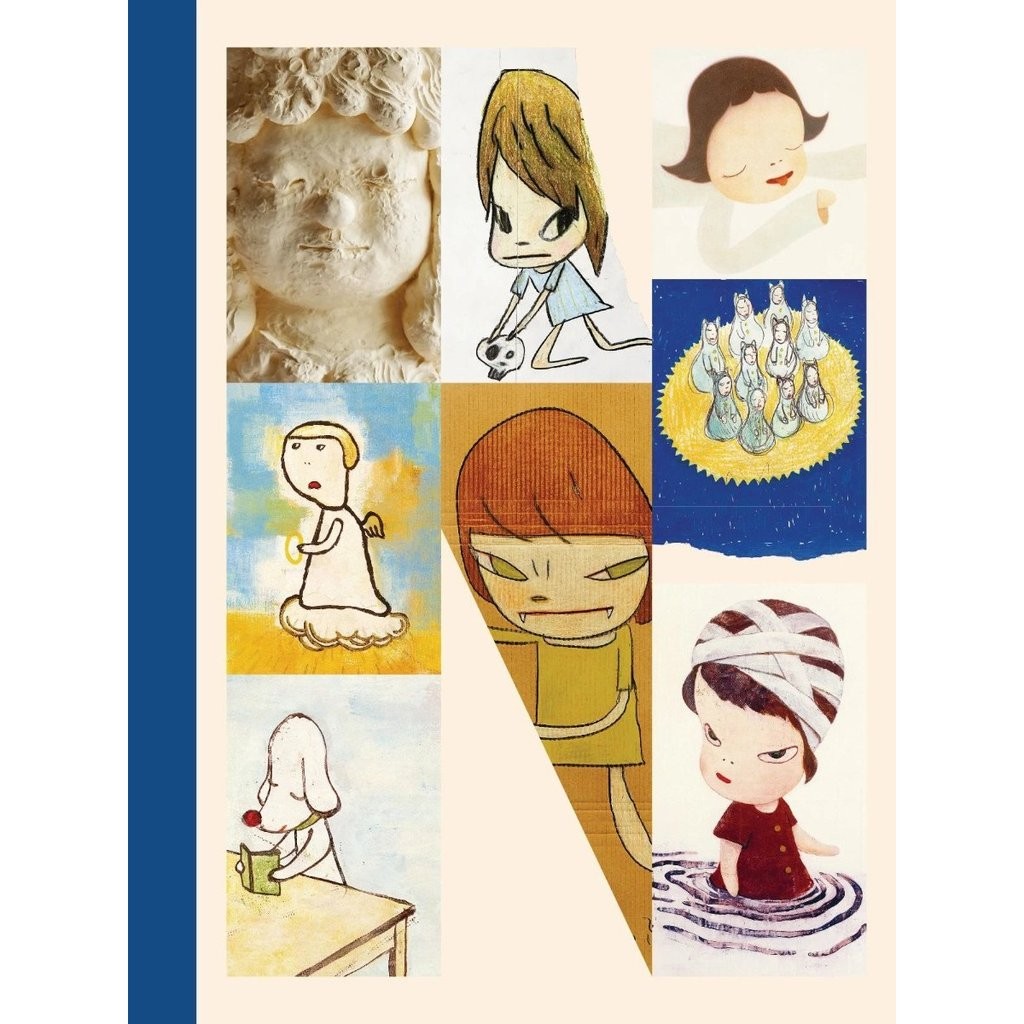Introduction
Yoshitomo Nara (b. Japan, 1959) is among the most beloved Japanese artists of his generation, known for his portraits of vaguely ominous-looking characters who have penetrating gazes and occasionally wield knives or cigarettes, as well as heads and figures that float in dreamy landscapes. Nara’s oeuvre reflects the artist’s raw encounters with his inner self, taking inspiration from a wide range of resources—memories of his childhood, music, literature, studying and living in Germany (1988–2000), exploring his roots in Asia and Sakhalin, and modern art from Europe and Japan. Spanning from 1984 to 2020, Yoshitomo Nara views the artist’s work through the lens of his longtime passion: music. Music’s ability to convey emotional depth and atmospheric power finds a parallel in Nara’s artworks, which combine visuality, emotion, and often text, and have evolved dramatically over the last three decades, from his earliest allegorical paintings from 1987 to his more recent portraits. Nara’s paintings from the 1990s and 2000s, in particular, are marked by layered brushwork and a kaleidoscopic palette.
They stand in contrast to both the rougher DIY aesthetic of his earlier works on paper and the smooth, highly polished fiber-reinforced plastic used in his early sculpture Recently, he has shifted to a much more contemplative mode, making ceramics and sculptures in cast bronze whose mottled surfaces evoke the artist’s hand. Expressing a kinship with the rawness of folk music, Nara has said, “If viewers are able to see beyond the impulsive and surface-level impact of [my] work, and sense a moving quietude and depth, then, no doubt, these effects are influenced by such music.” This exhibition aims to reset some of the dominant perceptions of Nara’s work by shifting the focus toward the self-critical introspection and individuality that have become more prevalent in the quiet, meditative work he has made in the last decade, particularly since the great 2011 Tōhoku earthquake and tsunami.




